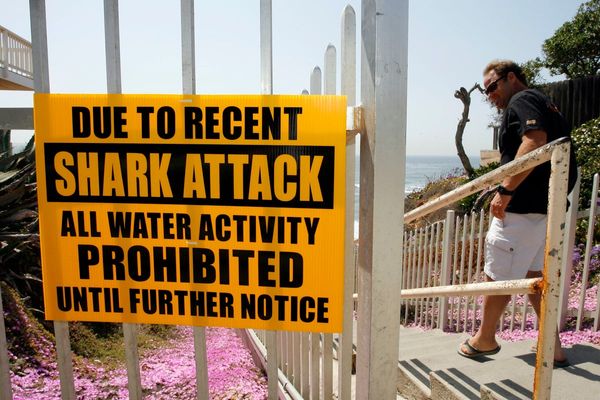
The Albanese government has announced a $1.7bn spend on hi-tech missiles which the defence minister, Richard Marles, said are needed “to hold our adversaries further from our shores and keep Australians safe”.
Australia will become just the third nation after the US and the UK to have access to Tomahawk cruise missiles, with $1.3bn being spent on 200 of the long range missiles to boost the capability of the three Hobart-class air warfare destroyers.
The missiles have a strike range of 1,500km and were identified in the most recent defence strategic review as necessary, given the capability gap in Australia’s long-range defences.
The purchase was foreshadowed in March, when the US state department greenlit the sale of up to 220 Tomahawks and supporting equipment in the days after details of the Aukus pact were announced.
Australia also requested the sale of extended range advanced anti-radiation missiles earlier this year, which US congress considered in February.
The Albanese government’s defence announcement includes $431m for 60 of those missiles, which will be operated on the Raaf’s Growler and Super Hornet aircrafts, and in the future on the F-35A Lightning II fighter jets which will update the Australian fleet.
Another $50m will be spent on arming Boxer combat reconnaissance vehicles with Spike Long-Range 2 anti-tank guided missiles.
The Albanese government is locking in the $1.7bn missile spend just days after the parliamentary party was forced to quell dissent over the Aukus pact from within the party membership. A push to remove explicit support for the agreement from the party platform led to one of the biggest debates on the national conference floor, with Anthony Albanese defending the decision to members by declaring “there was no security in isolation”.
The defence minister, Richard Marles, continued that theme in explaining the missile purchase, which will be officially announced on Monday.
“We are investing in the capabilities our defence force needs to hold our adversaries further from our shores and keep Australians safe in the complex and uncertain world in which we live today,” he said.
“The war in Ukraine has demonstrated the importance of having not just war stocks, but a domestic missile manufacturing industry and this announcement will help deliver that.”
The defence industry minister, Pat Conroy, who argued during the conference Aukus debate that opposing the pact was akin to supporting calls for appeasement in the early escalations of the second world war, said the missiles were necessary to “deliver capability quickly”.
“As we enter what many are calling the missile age, these will be vital tools for the Australian defence force to do its job of defending Australians,” he said.
Plans are also in place for Australia to begin developing its own missile manufacturing capabilities from 2025.
The defence strategic review, released in April, called for the ADF to develop the ability to precisely strike targets at longer range and develop a stronger network of bases, ports and barracks across northern Australia.
A recent report published by the Australian Army Research Centre warned Australia’s push to develop and deploy its own missiles lacked credibility as a means to deter conflict unless backed up by US support.
The paper argued Australian long-range strike capabilities had limited benefit as a tool to deter an aggressor because they merely impose cost without changing the outcome of a conflict.







